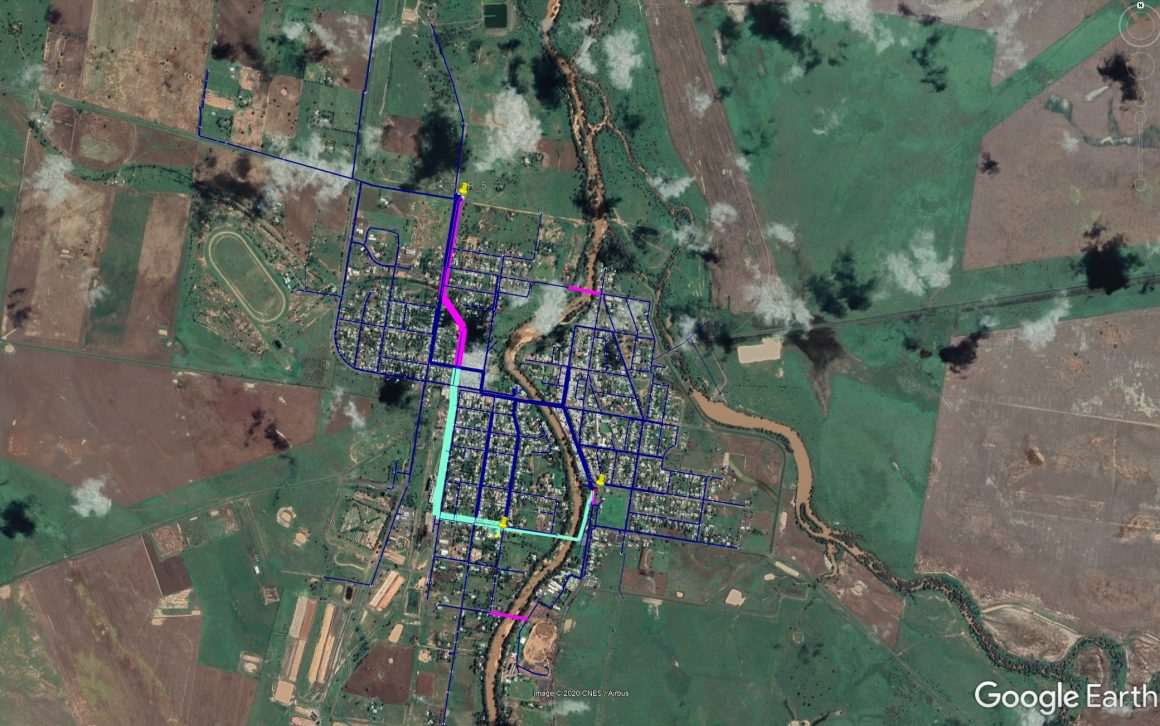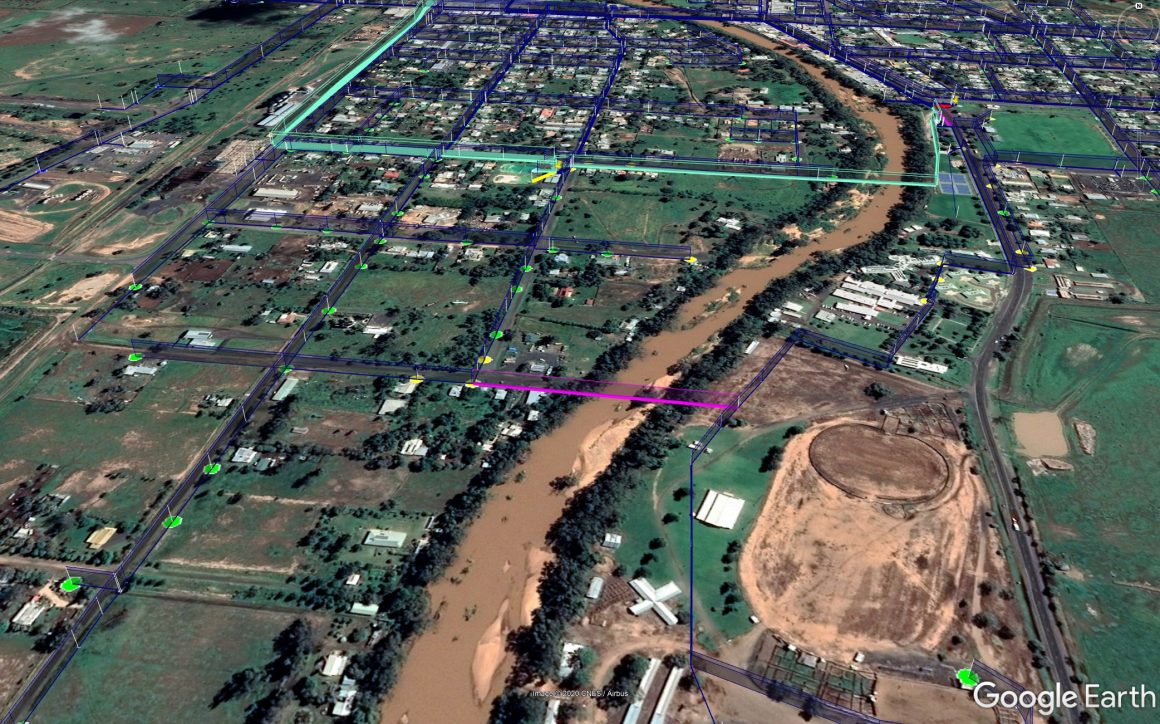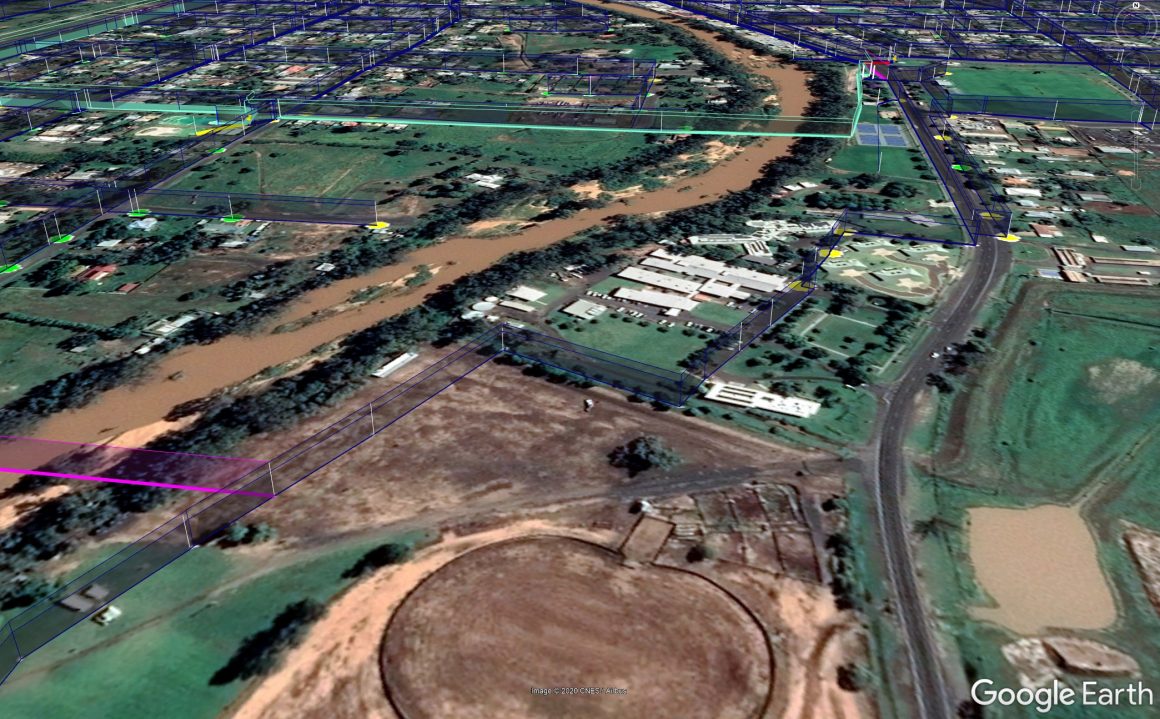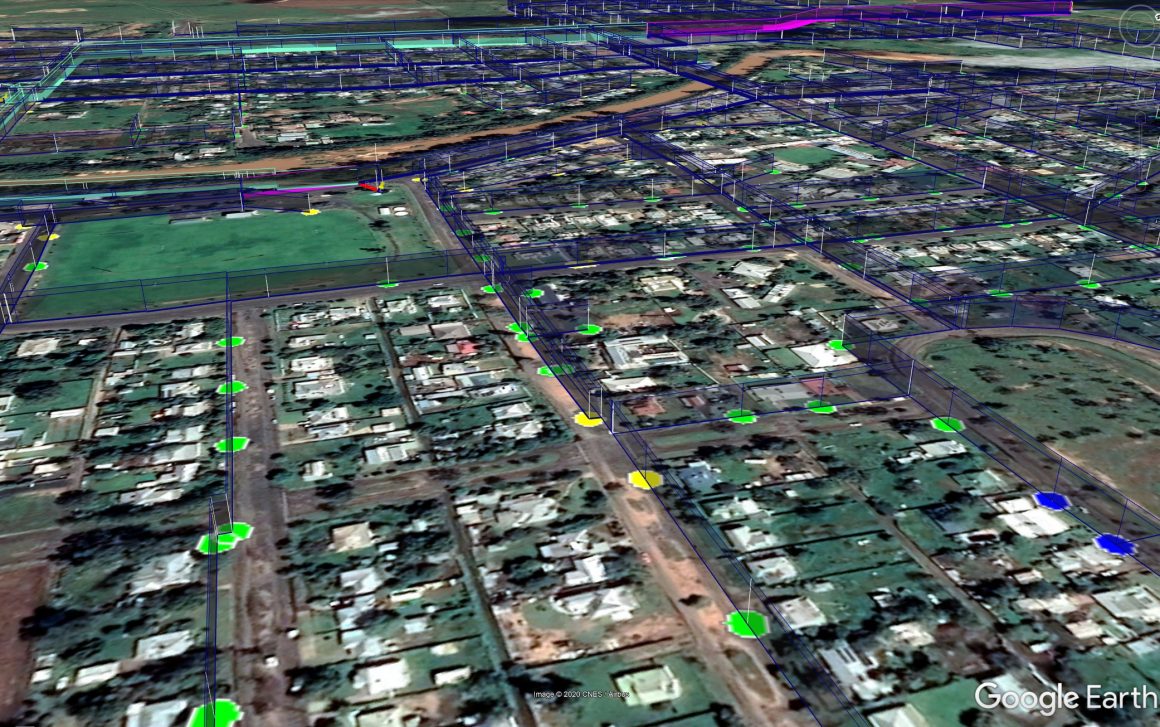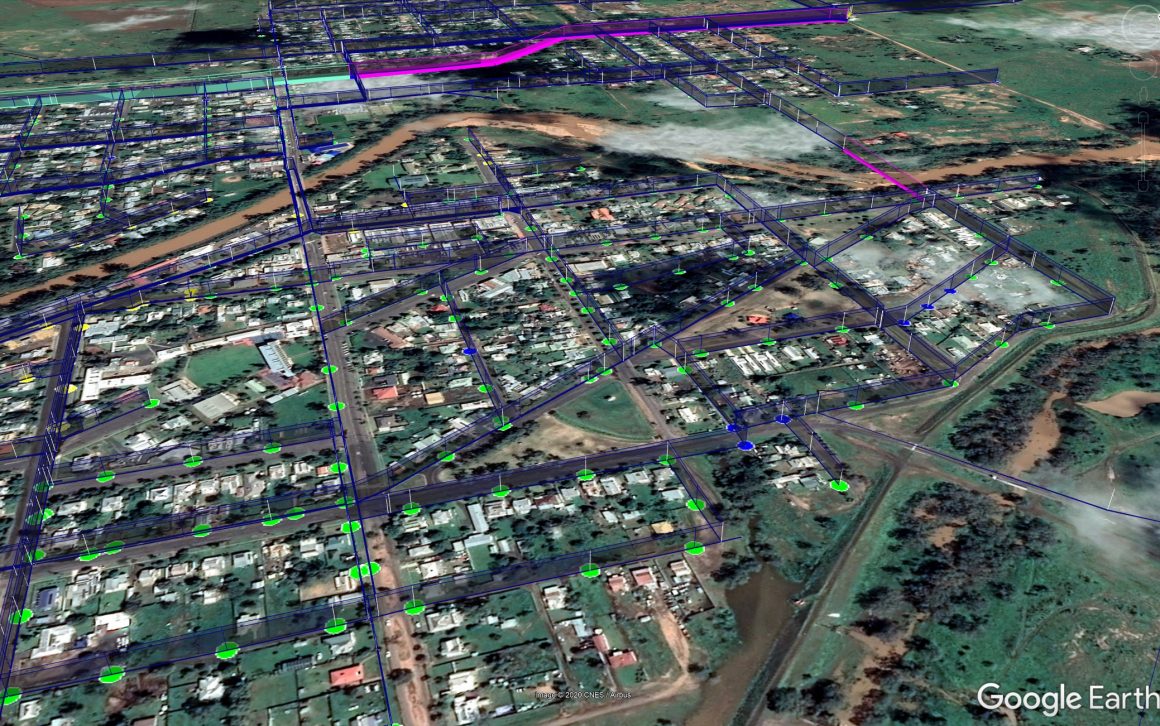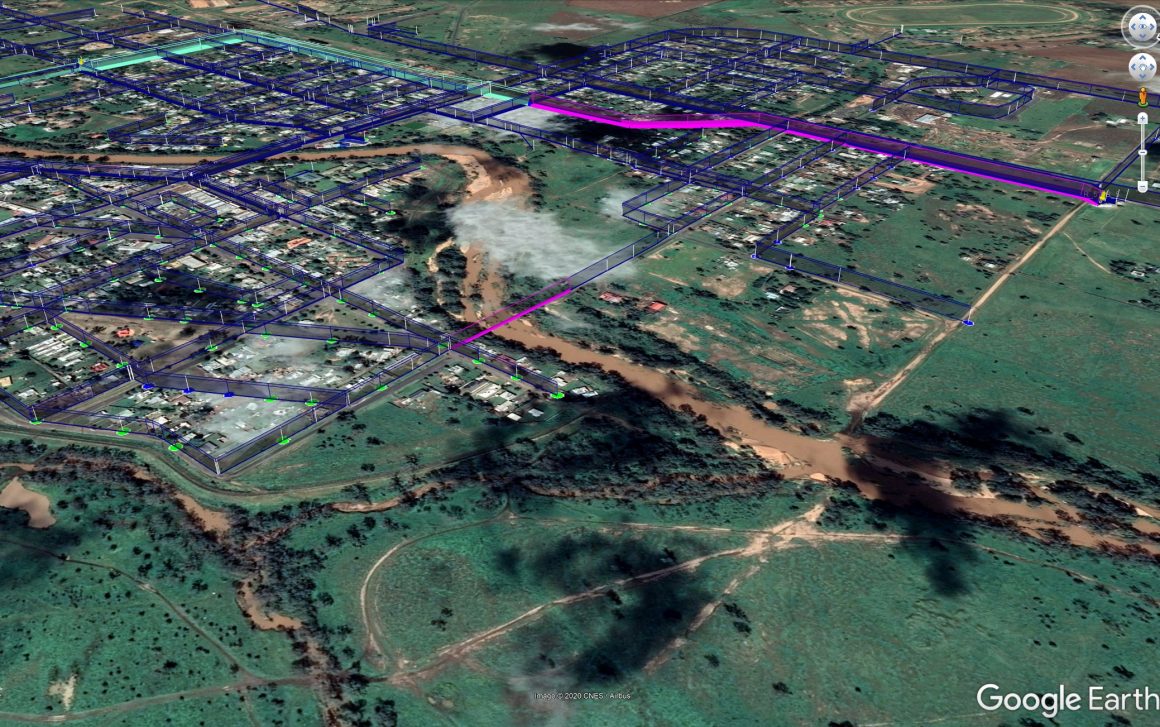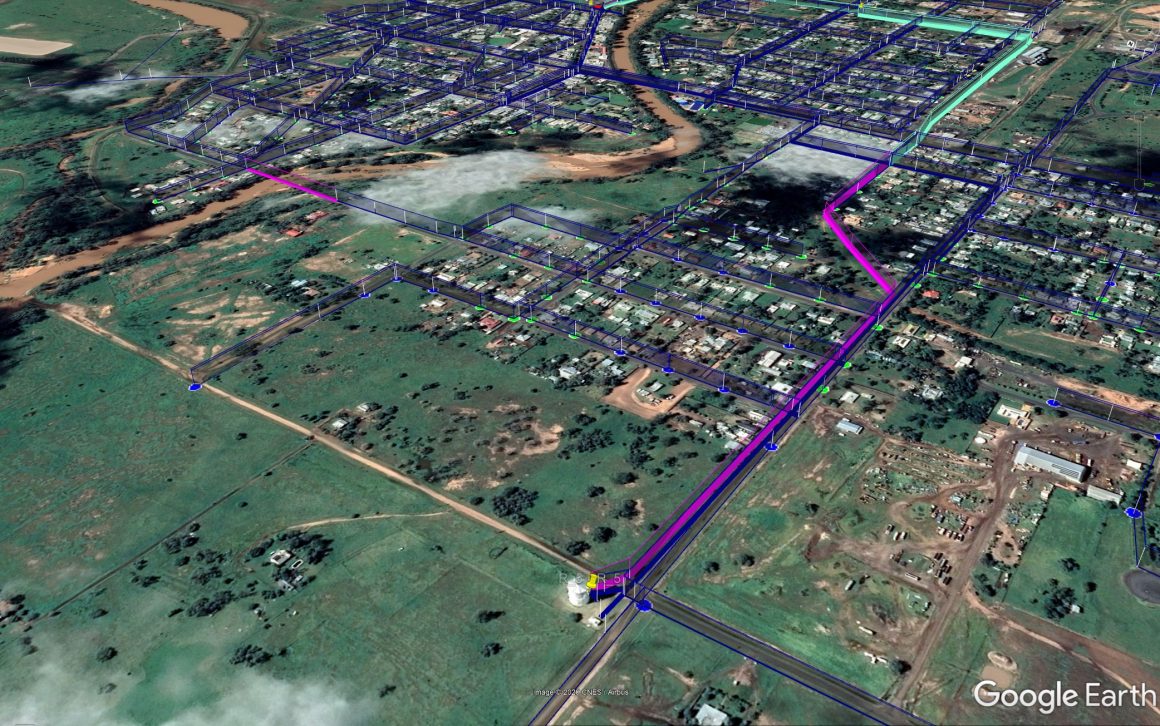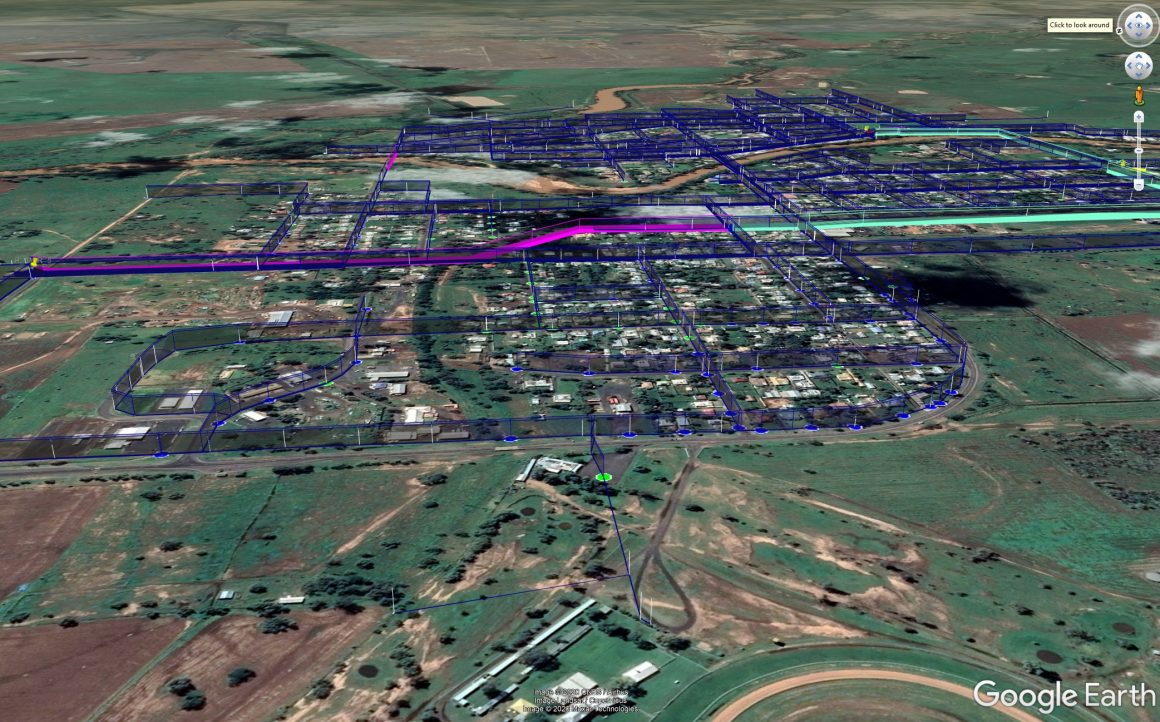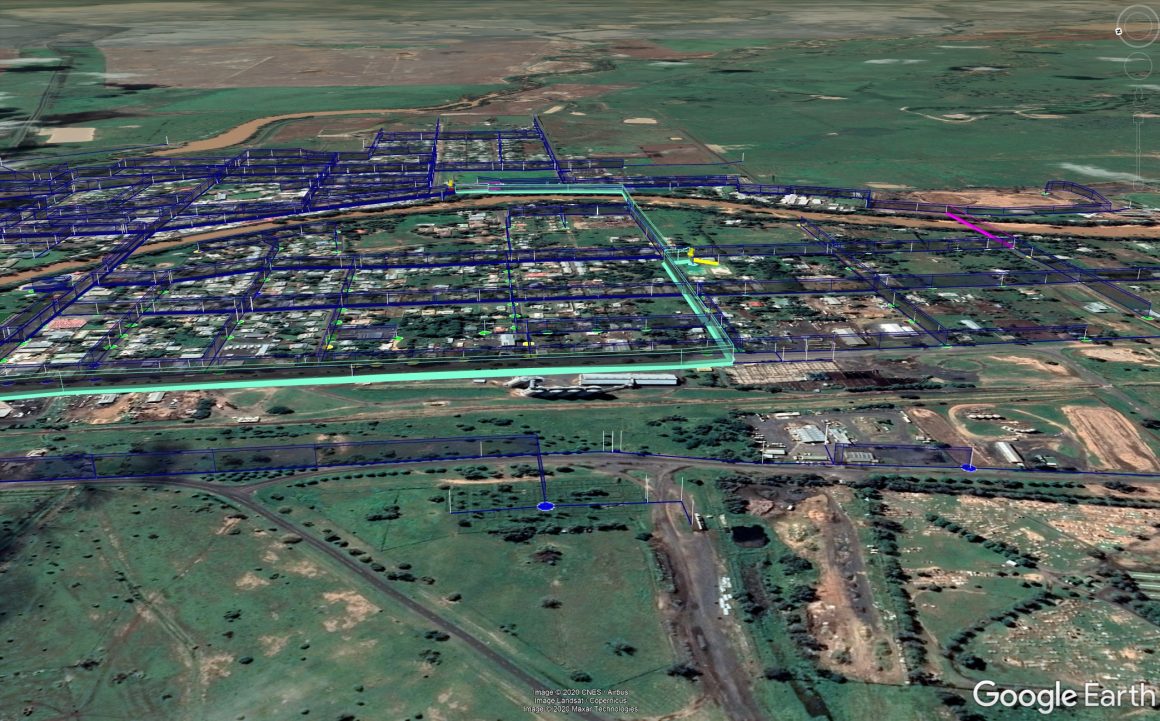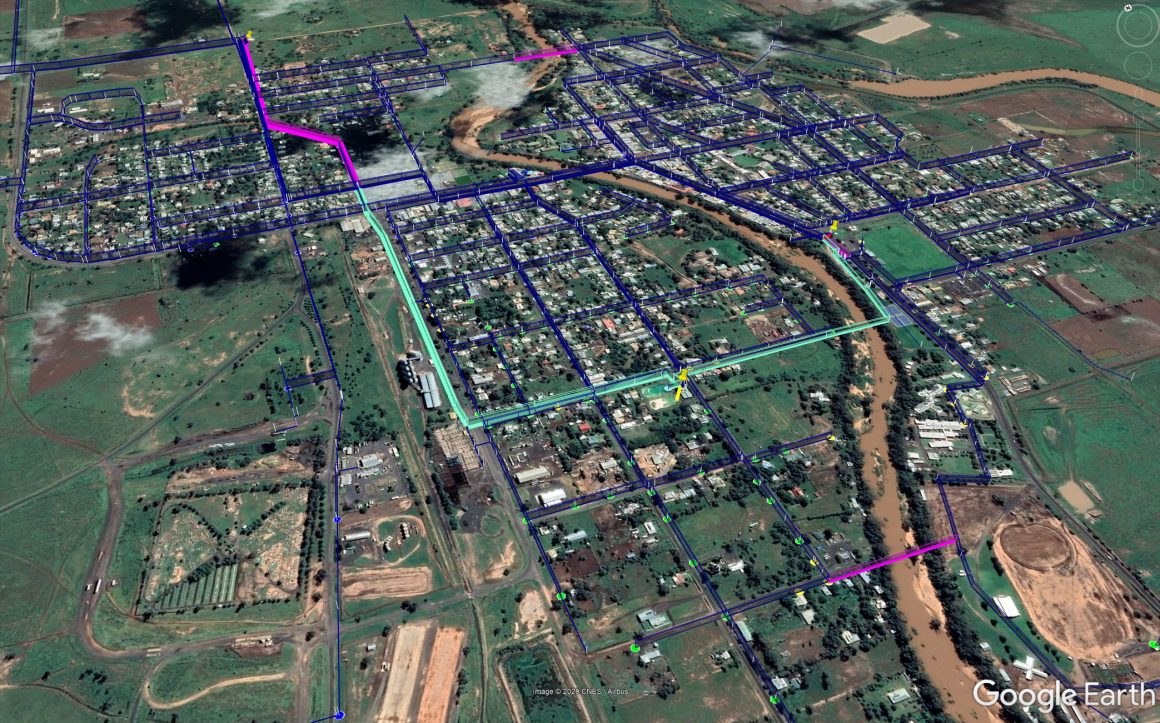Coonamble, NSW
An investigation was carried out jointly by the Coonamble Council and DP8 Engineering, using comprehensive hydraulic modelling of the entire potable water distribution system. Modelling was performed using a software package comprising two components: the EPANET calculation engine and the GIS component (called 3DNet), which served as the primary input/output enabler.
Coonamble Council provided the pipe network data in GIS format; the network was modelled to the individual customer level, which enabled easy integration with the customer billing and consumption databases. The application of such a state-of-the art modelling tool was shown to be an absolute necessity, since it enabled the establishment of very detailed understanding of the operation of the system, which otherwise would have been extremely difficult. The integrated tool can also be used for planning and asset management purposes, providing an additional benefit.
The model was calibrated using the consumption pattern observed during a peak demand day in December 2019 and very good agreement was found between the simulated and recorded data. The calibrated model allowed us to gain important insights into the operation of the system. With this detailed understanding, a number of measures were identified to improve the system performance, all of which were assessed based on pre-determined criteria.
The final measures recommended to the Council included the reconfiguration of the pipework at four critical locations in the town – such a network was shown to provide a marked improvement in terms of supply to critical customers, general system pressures, as well as water quality in the system.
